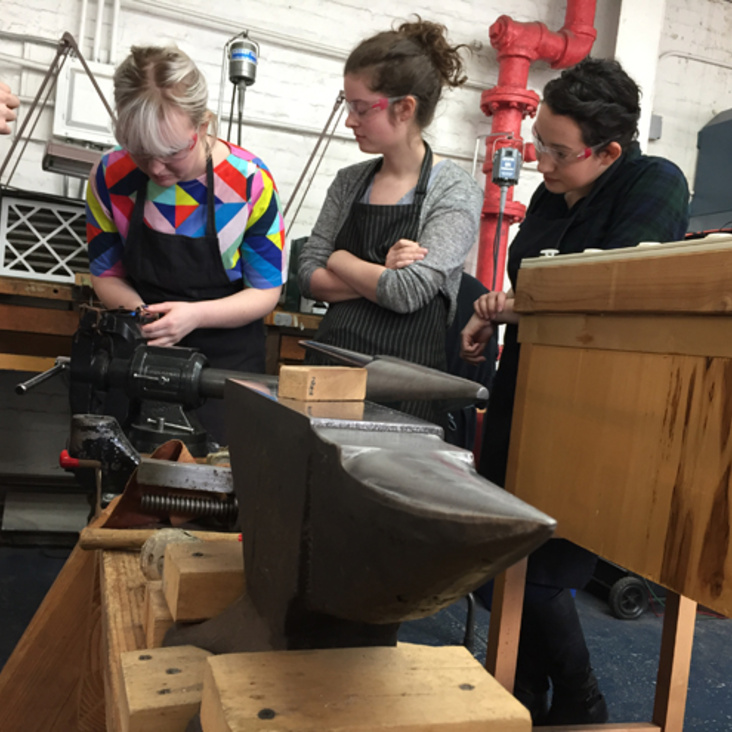As part of Bard Graduate Center’s “Material Days” program, this year’s first-year MA and PhD students visited the UrbanGlass studio in downtown Brooklyn over two Sundays in late September and early October. UrbanGlass, founded in 1977, is an organization devoted to education and experimentation in glass as a creative medium, and acts as a cooperative studio and exhibition space for individual makers and artist collectives. Framed as an introduction to glassblowing, our visit commenced with a walkthrough of the equipment and demonstration of the basic processes involved in a technique that dates to the ancient world. Then, working in teams under the able guidance of volunteer artists, we were each able to try our hand (and our lungs) at blowing glass, into either small decorative baubles or—for the more ambitious among us—functional open vessels.
Having previously studied the history of the studio glass “revival” in the postwar United States, I found myself with a deepened appreciation for the sheer physicality of the making process. From the sweltering heat of the furnace where glass is kept in a liquid state around 2000 degrees Fahrenheit, to the delicate choreography of moving through space with an ungainly blowpipe (and a still-liquid gather of glass hanging off its end), to the unexpected difficulty of pushing an initial bubble of air through the pipe into the glass—it was immediately striking how demanding the material could be, and how integral teamwork and communication were for achieving a successful result. The overriding foundation of glassblowing, as our guides explained, is the constant management of temperature, variously reheating or cooling different parts of the glass to ensure a stable internal structure or produce specific effects. It was difficult enough for us beginners, and my admiration is all the greater for the glassblowers of centuries past, who produced exquisite works without the benefit of electric kilns or digital temperature controls.
Our visit concluded with a brief tour of the other
facilities in the UrbanGlass studio, including the coldworking shop, molding
studio, and a kiln room for fusing flat glass, highlighting the wide array of
techniques and diversity of expressive effects available to the glass artist. As
we dive into our collective studies of the material past at Bard Graduate
Center, such an up-close and visceral encounter is an invaluable complement to
the usual, more distant modes of scholarly engagement with objects—driving home
both the difficult and seductive qualities of the things we study.
—Colin Fanning, MA 2013, PhD student









